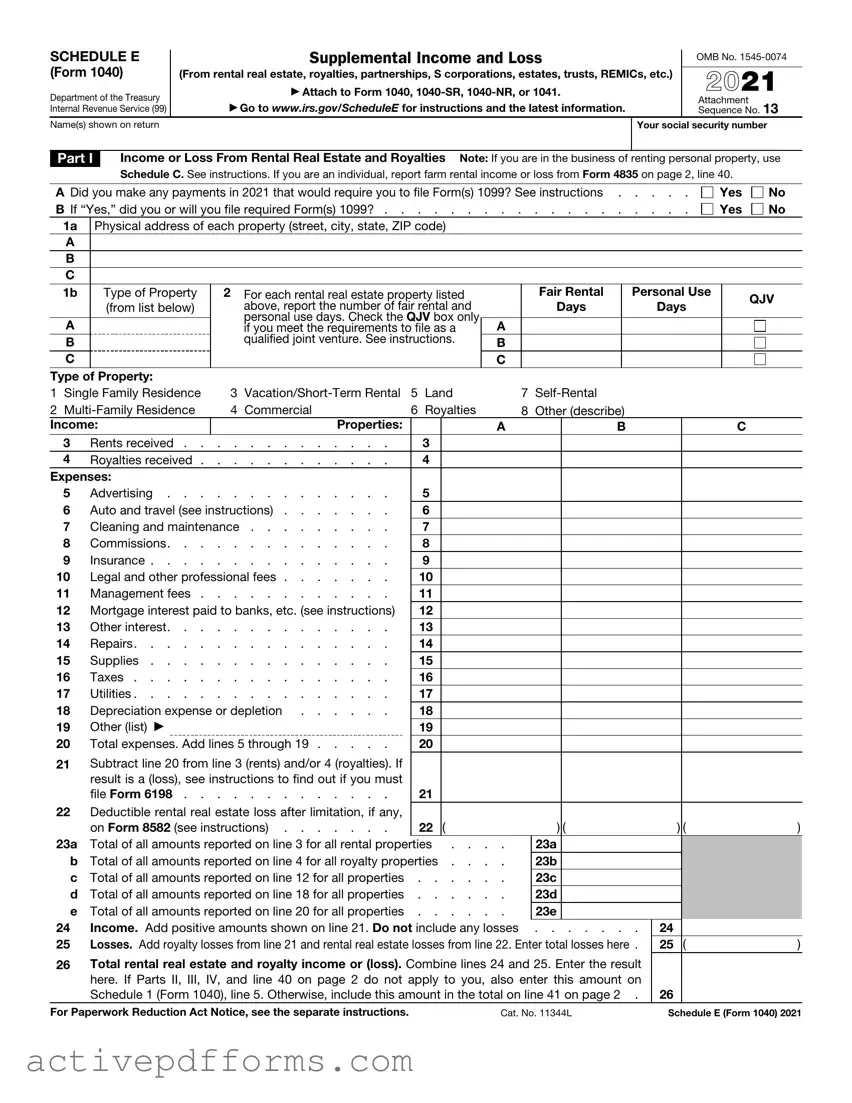The tax landscape in the United States is complex, with numerous forms that filers must navigate during the tax season. One such form, the IRS Schedule E (Form 1040), is essential for individuals earning rental income, royalties, partnerships, S corporations, trusts, and estates, among other specialized sources of income. This form allows taxpayers to report supplemental income or loss from these ventures, which is a critical aspect of ensuring accurate tax liability calculation and compliance with IRS regulations. Not only does Schedule E serve as a pivotal tool for reporting non-employee income, but it also provides avenues for deductions related to these income sources, such as property maintenance for rentals or operational expenses for partnerships. Understanding and accurately completing this form is paramount for taxpayers looking to optimize their tax situations while adhering to the legal requirements set forth by the Internal Revenue Service. The nuances of Schedule E demand a thorough comprehension of its sections and the types of income each represents, ensuring that taxpayers can effectively report earnings and claim permissible deductions, ultimately shaping their financial responsibilities in the tax year.


